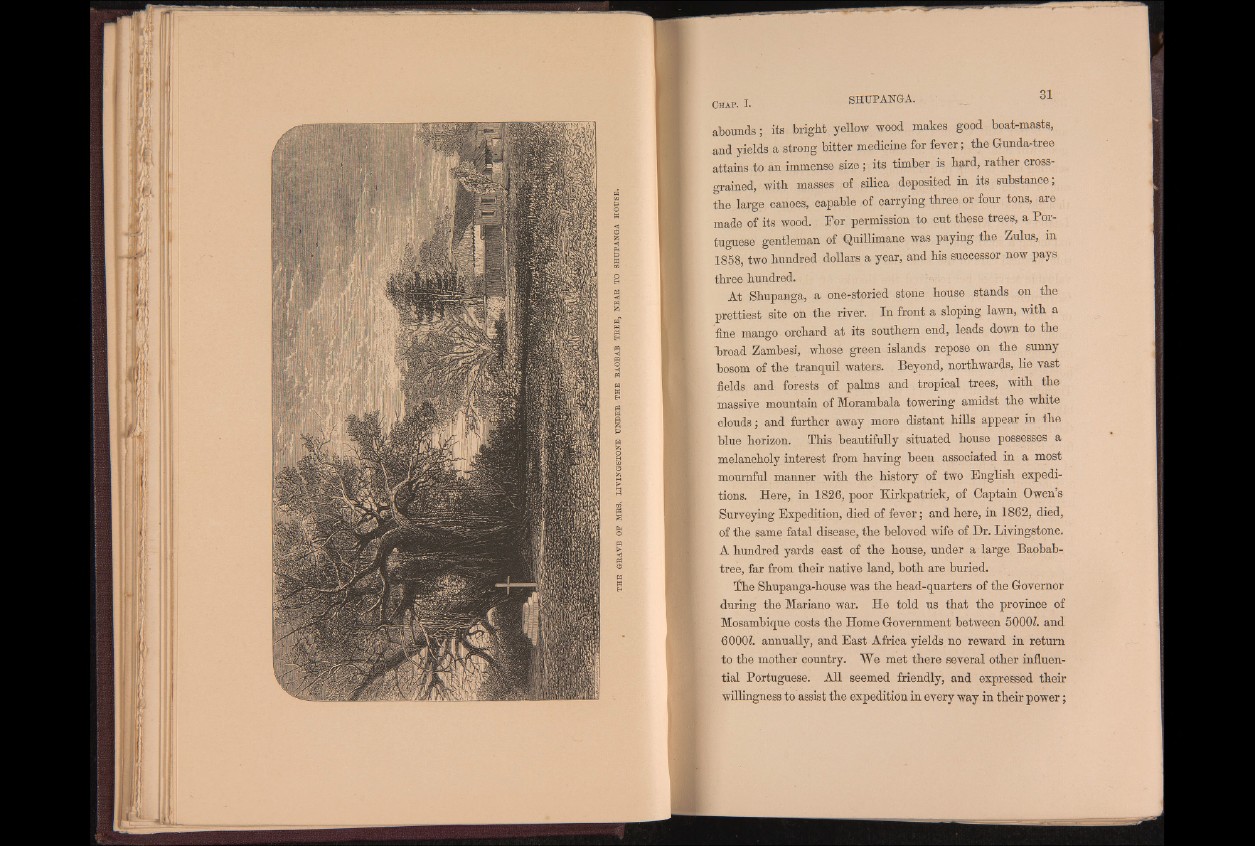
abounds; its bright yellow wood makes good boat-masts,
and yields a strong bitter medicine for fever; the Gunda-tree
attains to an immense size ; its timber is hard, rather cross-
grained, with masses of silica deposited in its substance;
the large canoes, capable of carrying three or four tons, are
made of its wood. For permission to cut these trees, a Portuguese
gentleman of Quillimane was paying the Zulus, in
1858, two hundred dollars a year, and his successor now pays
three hundred.
At Shupanga, a one-storied stone house stands on the
prettiest site on the river. In front a sloping lawn, with a
fine mango orchard at its southern end, leads down to the
Broad Zambesi, whose green islands repose on the sunny
bosom of the tranquil waters. Beyond, northwards, lie vast
fields and forests of palms and tropical trees, with the
massive mountain of Morambala towering amidst the white
clouds; and further away more distant hills appear in the
blue horizon. This beautifully situated house possesses a
melancholy interest from having been associated in a most
mournful manner with the history of two English expeditions.
Here, in 1826, poor Kirkpatrick, of Captain Owen’s
Surveying Expedition, died of fever; and here, in 1862, died,
of the same fatal disease, the beloved wife of Dr. Livingstone.
A hundred yards east of the house, under a large Baobab-
tree, far from their native land, both are buried.
The Shupanga-house was the head-quarters of the Governor
during the Mariano war. He told us that the province of
Mosamhique costs the Home Government between 50001. and
60001. annually, and East Africa yields no reward in return
to the mother country. We met there several other influential
Portuguese. All seemed friendly, and expressed their
willingness to assist the expedition in every way in their power;